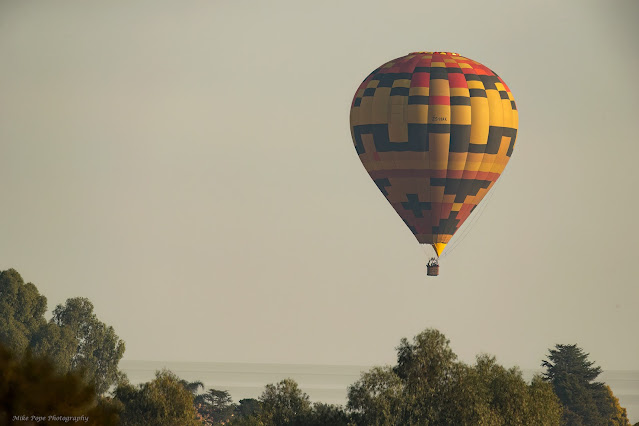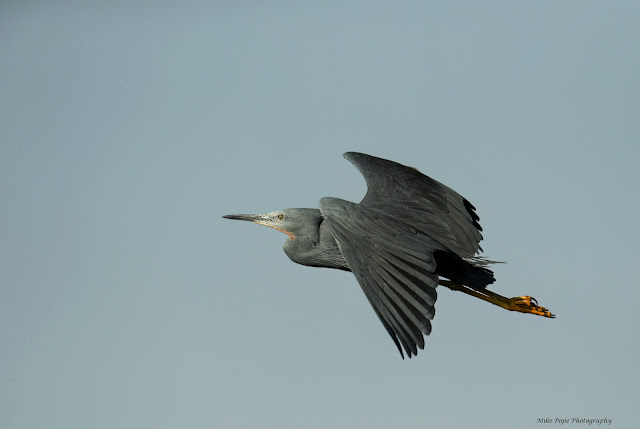10 August 2023 - Northern Farm
I spent a few hours on the Farm arriving just after sunrise and headed down to my first stop at the quarry hoping to hear or see a bird that is special and now synonymous with this site on the farm. I was not disappointed, as a single African Yellow Warbler was singing from the top of the tree I saw it on my previous visit - it was joyful
 |
| African Yellow Warbler (Iduna natalensis) |
I always end up spending more time than planned at the quarry and added Grey-headed Gull above the small pond. I love how Gulls extend their necks in flight - part of a display, I guess
 |
| Grey-headed Gull (Chroicocephalus cirrocephalus) |
Hadeda's are pretty common all round the farm
 |
| Hadeda Ibis (Bostrychia hagedash) |
A Goliath Heron came flying in and landed in one of the bare Willow Trees
 |
| Goliath Heron (Ardea goliath) |
There was a pair of Three-banded Plovers on the exposed mud of the pond
 |
| Three-banded Plover (Charadrius tricollaris) |
The Wild Dagga did not have any flowers, but still there was a White-bellied Sunbird around
 |
| Male White-bellied Sunbird (Cinnyris talatala) |
I then headed toward the cow pens, finding African Stonechat
 |
| Male African Stonechat (Saxicola torquatus) |
And a few Common Starling on the overhead lines, not really welcome - but also a good record for the Pentad
 |
| Common Starling (Sturnus vulgaris) |
Continuing on my circular route, a smaller dam had a number of Red-knobbed Coot with young - probably one of the ugliest baby birds you could see, in my opinion
 |
| Red-knobbed Coot (Fulica cristata) |
In the grassland, I found a small flock of Orange-breasted Waxbill, a really good record for this Pentad - but only managed an image of the juvenile
 |
| Juvenile Orange-breasted Waxbill (Amandava subflavus) |
My last stop was at the main dam, where I had an obliging Lesser Swamp Warbler feeding in and around the spillway
 |
| Lesser Swamp Warbler (Acrocephalus gracilirostris) |
A few Blue-billed Teal were feeding in the shallows
 |
| Blue-billed Teal (Spatula hottentota) |
Yellow-billed Duck had bred successfully
 |
| Yellow-billed Duck (Anas undulata) |
Whilst this pair gave a great fly by, showing off the distinctive green speculum
 |
| Yellow-billed Duck (Anas undulata) |
The Black-headed Heron's have started nesting in the tall Pine Tree
 |
| Black-headed Heron (Ardea melanocephala) |
Whilst below, White-breasted Cormorants are doing the same. Their droppings have almost turned the dead tree white
 |
| White-breasted Cormorant (Phalacrocorax lucidus) |
Across the dam, this Cormorant had caught a sizable Barbel and it took quite some time before it eventually swallowed it - not sure how long that meal lasts before it needs to feed again?
 |
| White-breasted Cormorant (Phalacrocorax lucidus) |
Whilst watching the Cormorant, a Black Sparrowhawk made a dash across the dam
 |
| Black Sparrowhawk (Accipiter melanoleucus) |
It was then time to head home, but had a quick stop at the restaurant area where I found the Kurrichane Thrush. It seems to be an occasional visitor and is by no means guaranteed
 |
| Kurrichane Thrush (Turdus libonyanus) |
























































































